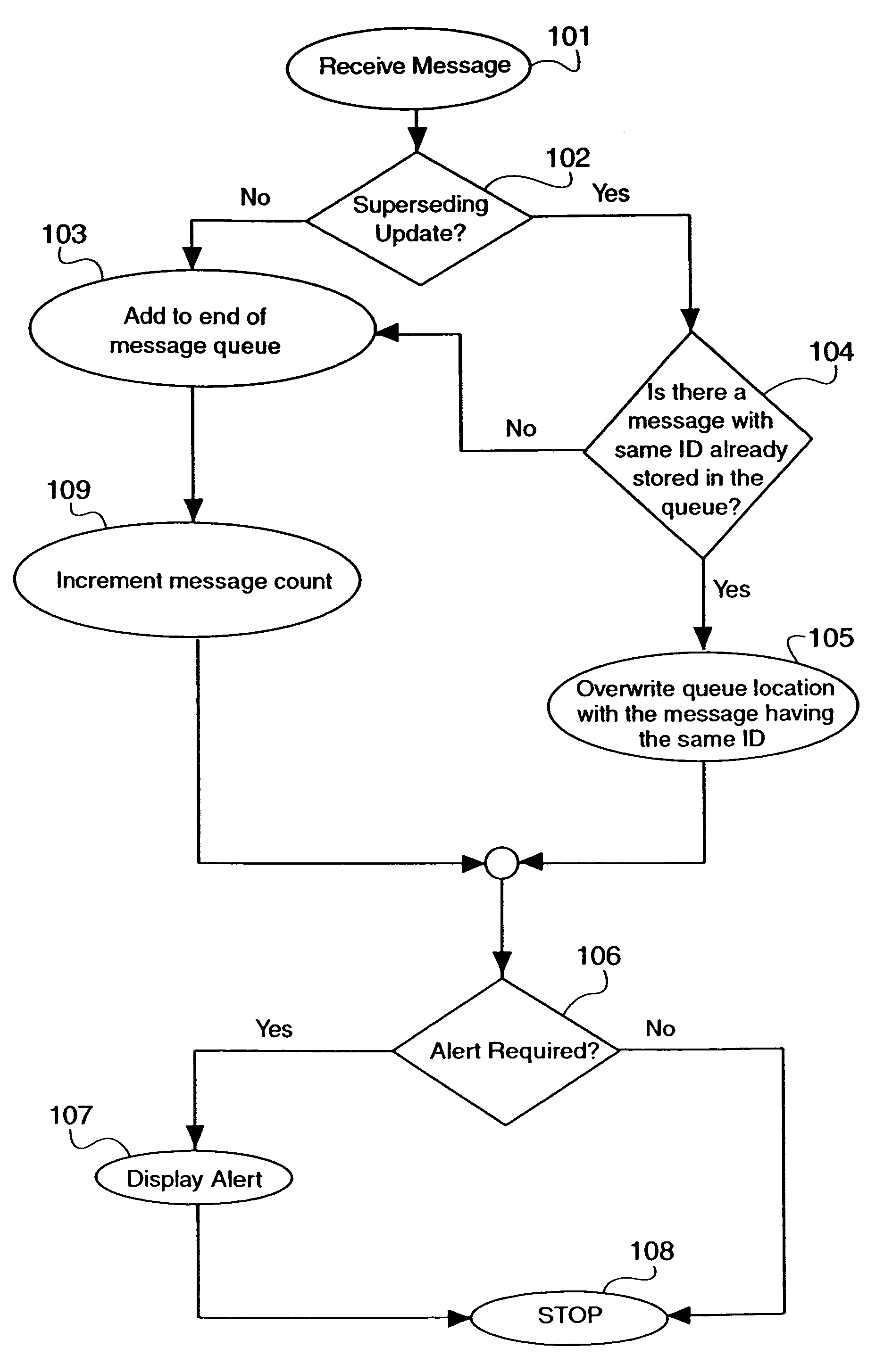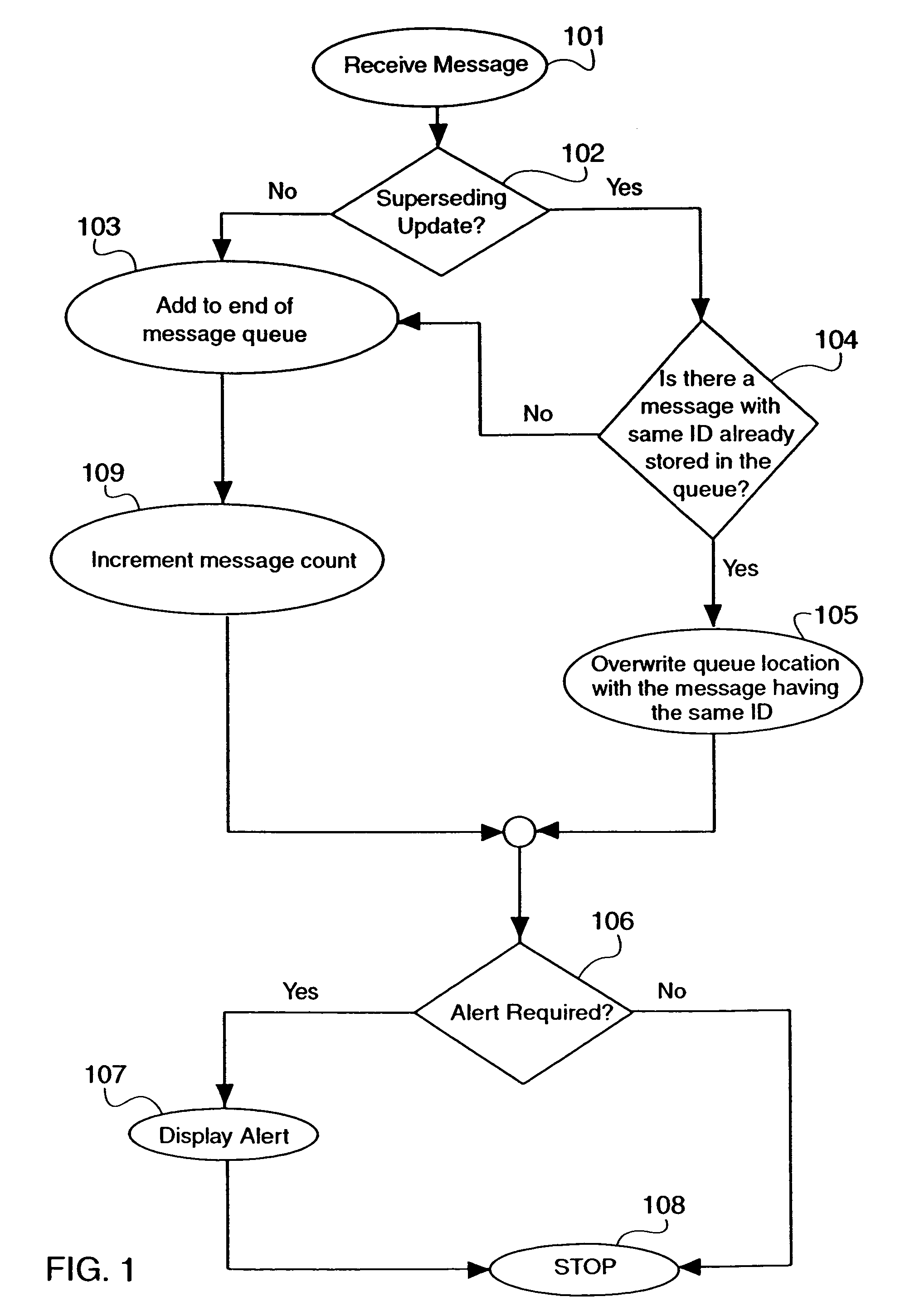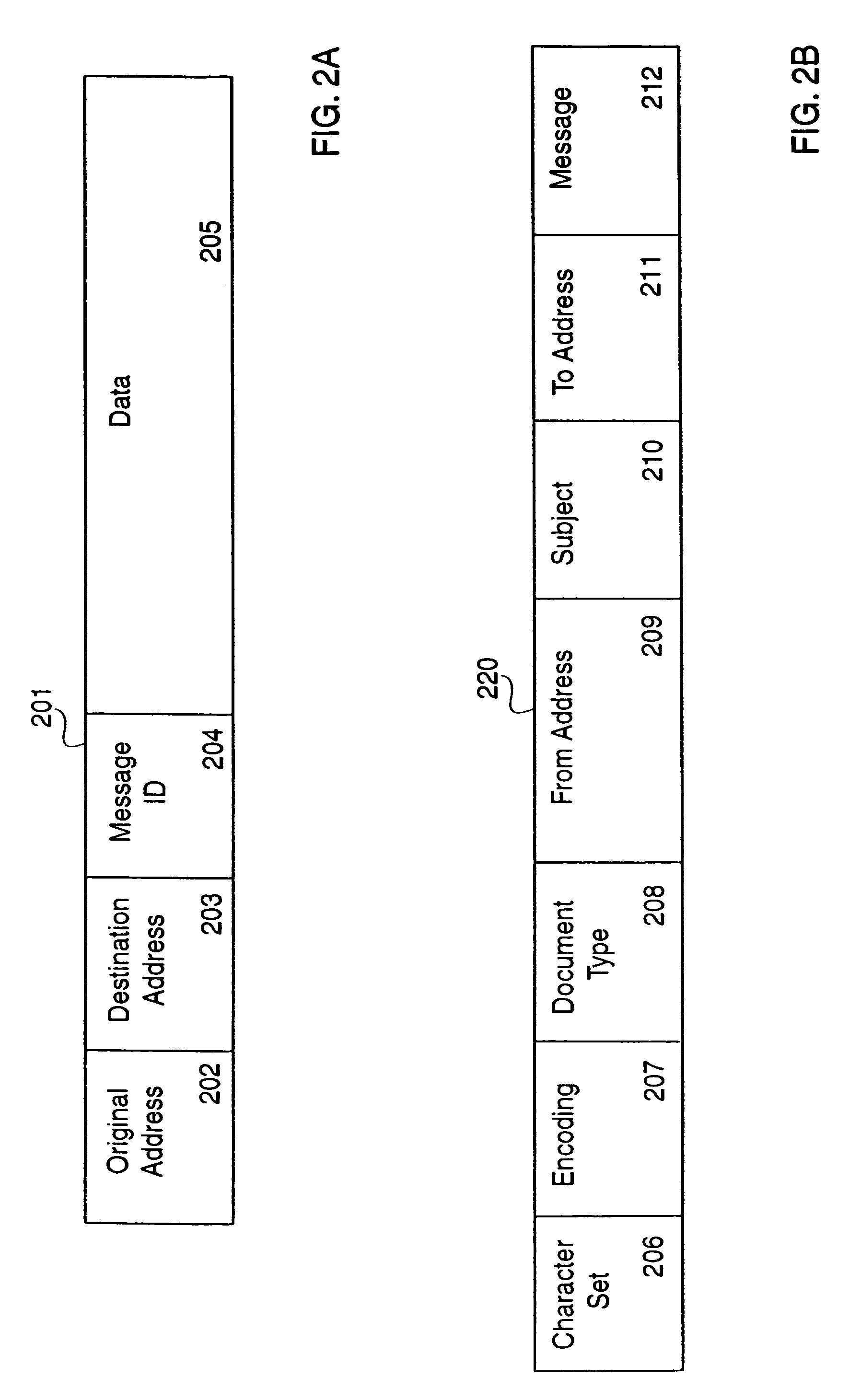Intelligent queue for information teleservice messages with superceding updates
a technology of information teleservice messages and intelligent queues, applied in the field of communication networks, can solve the problems of unreliable voice messages, inconvenience, and difficulty in “scrolling” through, and achieve the effect of efficient use of memory spa
- Summary
- Abstract
- Description
- Claims
- Application Information
AI Technical Summary
Benefits of technology
Problems solved by technology
Method used
Image
Examples
Embodiment Construction
[0057]The present invention provides a method and apparatus for conveniently and efficiently receiving, storing and / or delivering short messages in a message exchange communications network from, e.g., information service providers. Although the following description is given with reference to a preferred embodiment in which the invention is practiced in a short message service network, particularly in a mobile communication network, it would be apparent to one of ordinary skill that the principles of the present invention are equally applicable to any other types of communications networks in which messages are exchanged and stored by subscribers of the network.
[0058]The subscriber receives a variety of messages, either as an electronic mail message delivered to the subscriber's computer connected to a communications network, e.g., shown in FIG. 8, or as a short message delivered to their mobile handset 804 from any of a variety of sources, e.g., the sender 806, through a network 8...
PUM
 Login to View More
Login to View More Abstract
Description
Claims
Application Information
 Login to View More
Login to View More - R&D Engineer
- R&D Manager
- IP Professional
- Industry Leading Data Capabilities
- Powerful AI technology
- Patent DNA Extraction
Browse by: Latest US Patents, China's latest patents, Technical Efficacy Thesaurus, Application Domain, Technology Topic, Popular Technical Reports.
© 2024 PatSnap. All rights reserved.Legal|Privacy policy|Modern Slavery Act Transparency Statement|Sitemap|About US| Contact US: help@patsnap.com










